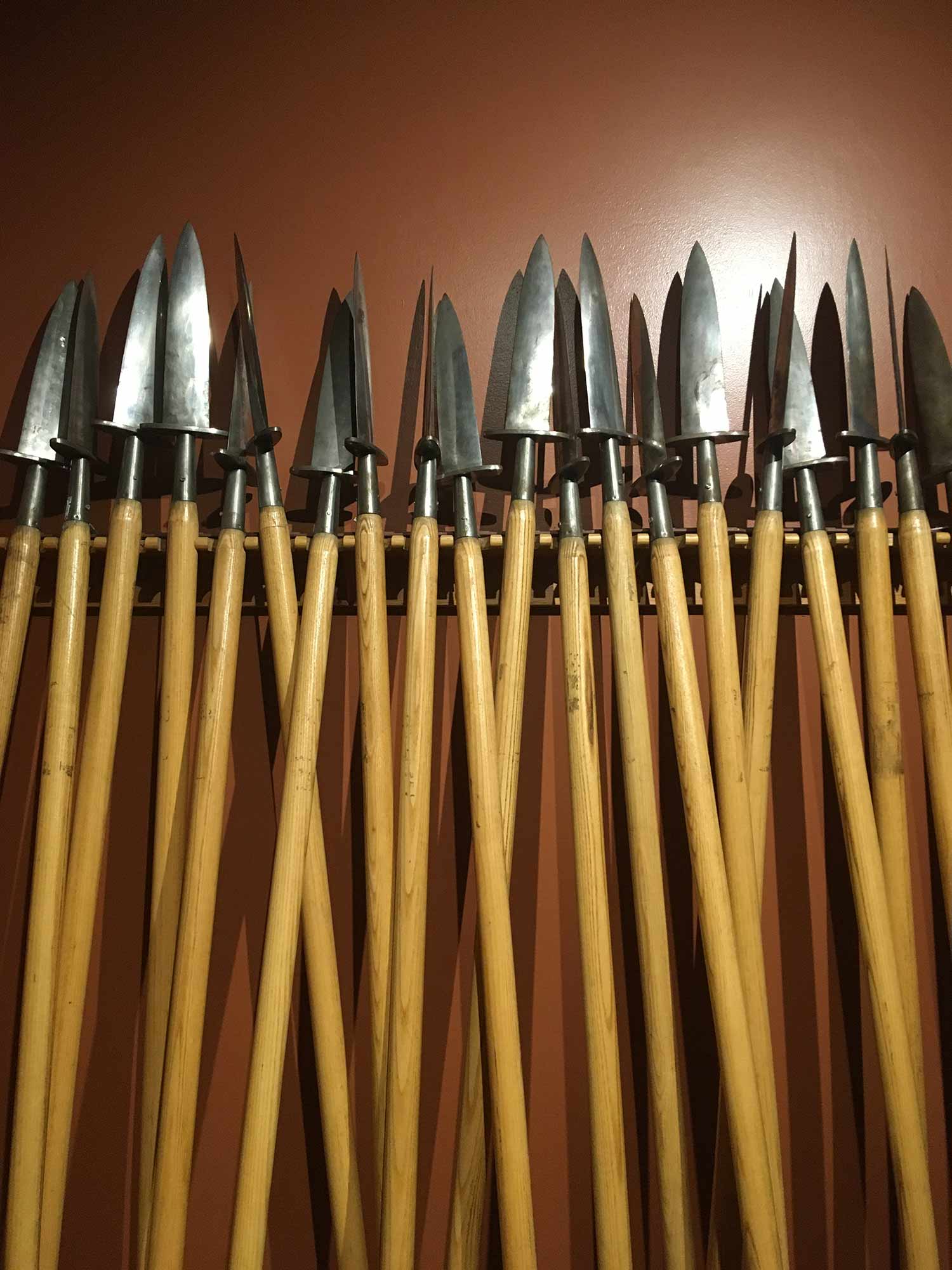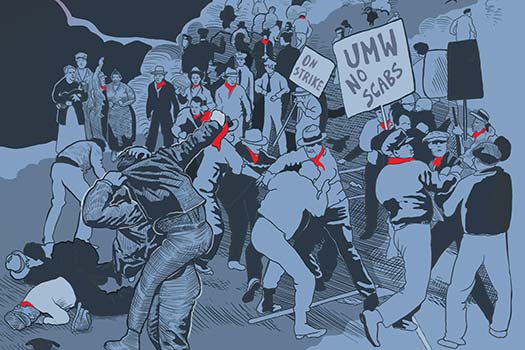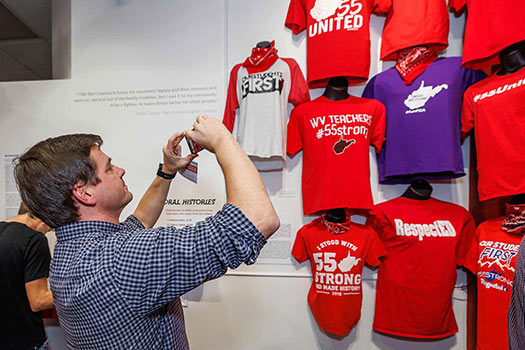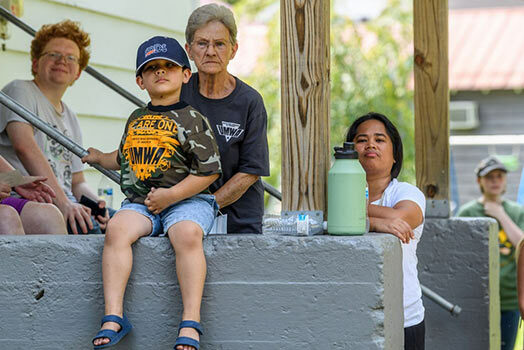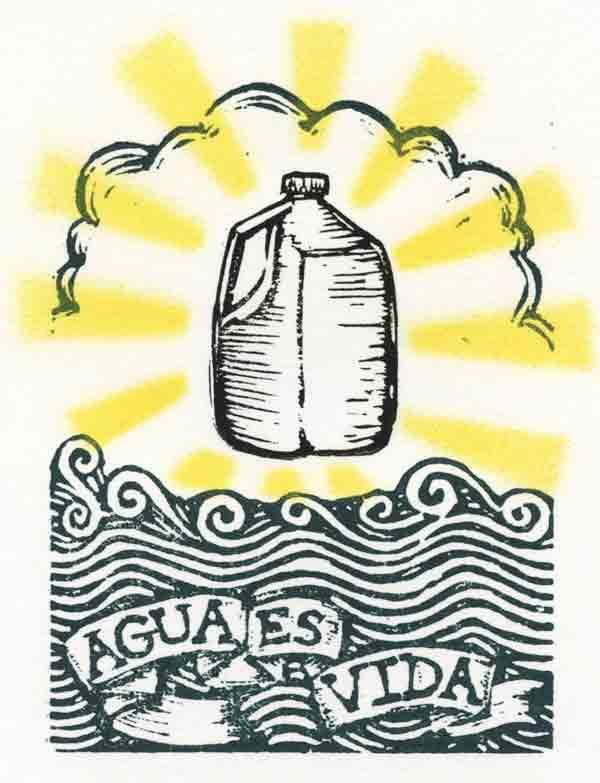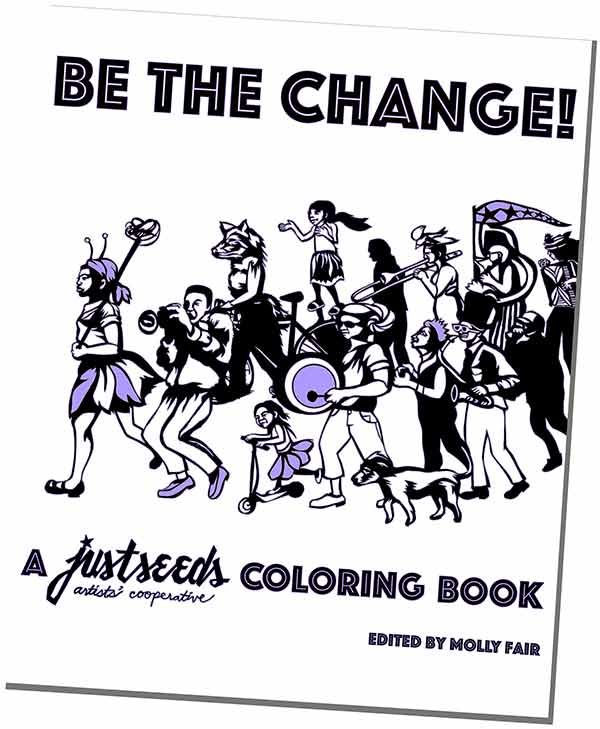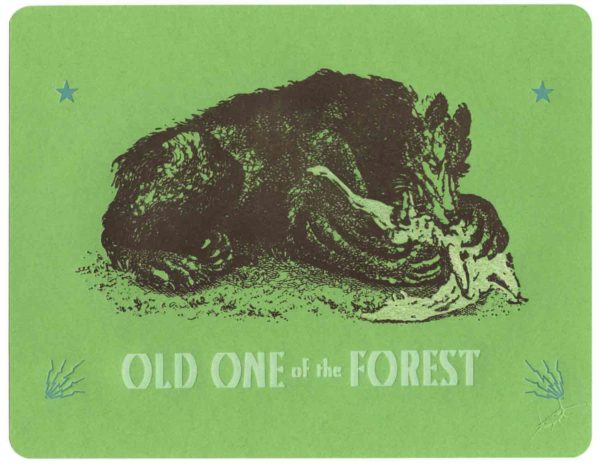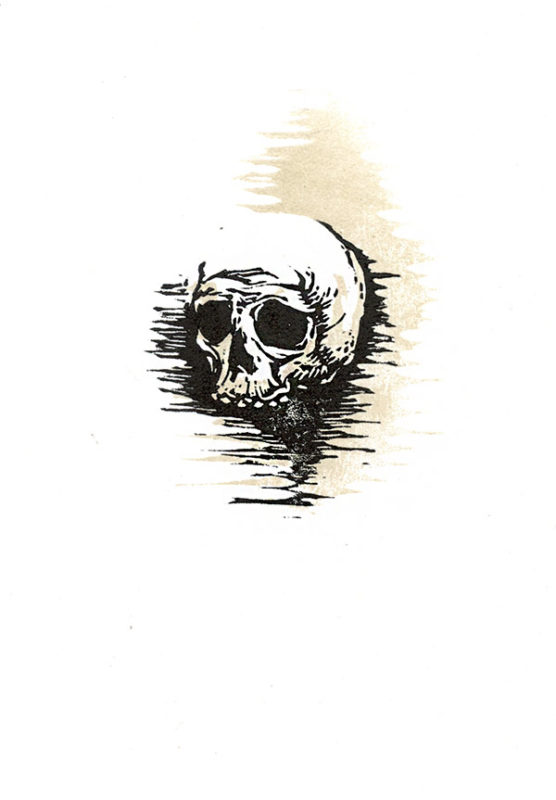“To be honest, I carry all of them with me now. I’ve spent as many hours studying their features as I did studying their histories, and I feel a responsibility to them.”
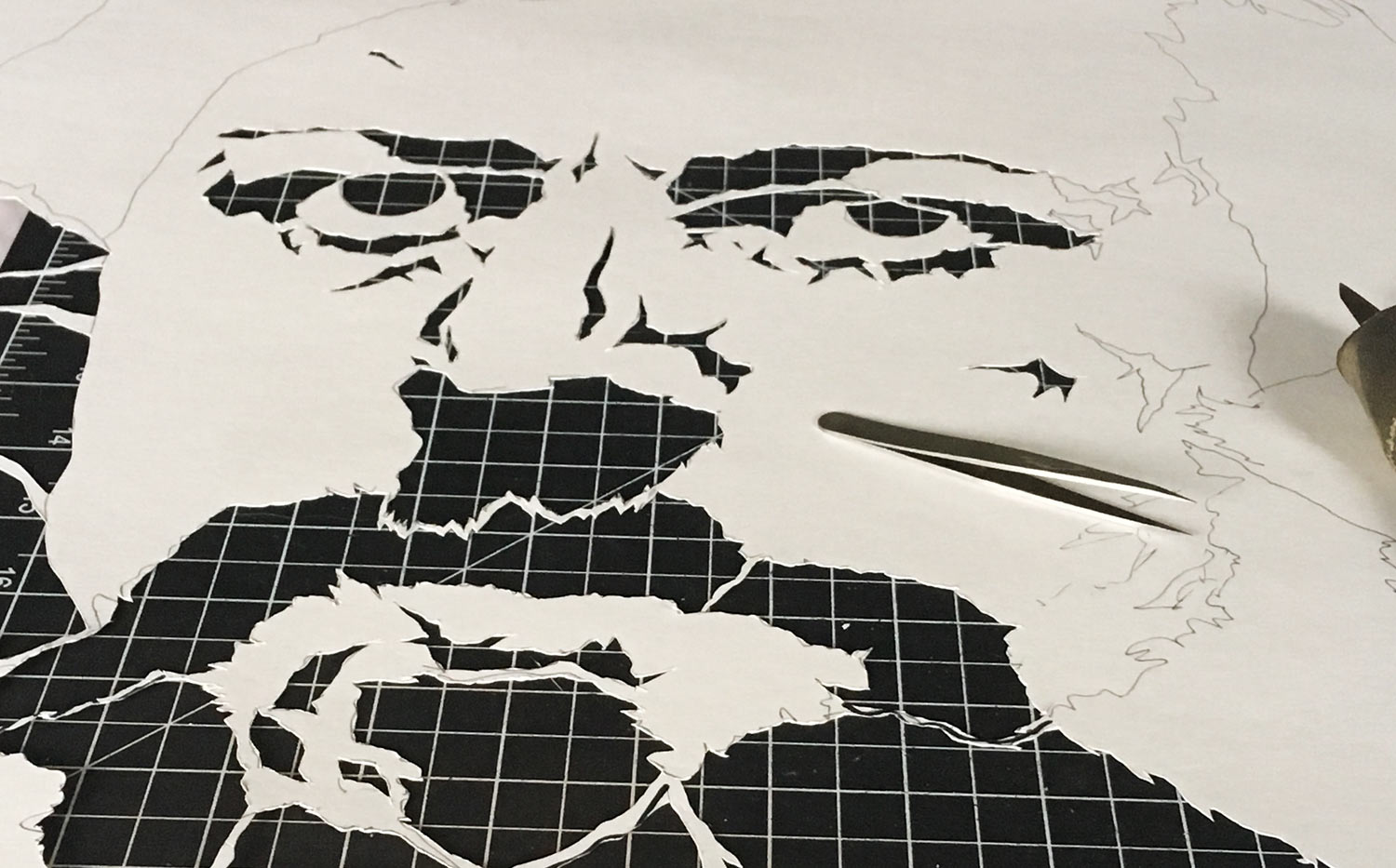
Peter Cizmadia (@the_far_country) is an artist based in Washington DC – specifically, six blocks from Fort Stevens, where a garrison of Union soldiers held off a Confederate assault on the city in 1862. Peter was recently the Fall 2018 Artist-in-Residence at Harpers Ferry National Historic Park, site of John Brown’s abolitionist raid on a US Arsenal in October of 1859. Harpers Ferry sits along the Potomac River across from Maryland on the far eastern tip of the West Virginia panhandle, not far from Washington DC. It’s a particularly beautiful place if you catch it from the train, but despite my tendency towards visiting historic places in search of their genius loci, I’ve yet to ever stop there to intentionally explore.
I’m intrigued by how Peter was using his residency to merge his street-inspired printmaking techniques with the deep history of the place he was working in. I also like how he’s thinking about the story of John Brown’s Raid: that it wasn’t just Brown’s. Collective action is the true story, at Harpers Ferry in 1859 and in so many other stories.
We exchanged emails this winter, in which we talk about how Peter’s work fits into the constant struggle to teach the history of collective action, a people’s history from below.
Can you outline this portrait series you’re working on? Who are these portraits of, and why did you pick these individuals?
This series portrays the 24 men and women that helped plan and execute John Brown’s raid on the armory at Harpers Ferry. The story of John Brown is fairly well known, but the stories of these volunteers are often buried in the rush to blame or canonize John Brown. It is tragic that their sacrifices are not more widely known. So, these paintings are my attempt to portray these men and women as individuals, with stories and motivations and lives.
In the re-telling of history of the raid on Harpers Ferry, I feel that we have neglected to recognize that this event was driven by a collective effort, trying to build capacity for mass, sustained action. Centering John Brown presents him as either a hero figure or an easy villain, and neuters the movement of its truth: that everyday, normal people signed up for this crusade to end slavery, and sacrificed mightily to do so. When we ignore their stories, we lose a much more powerful truth: that John Brown was surrounded by people that saw the world as he did, and were willing to die to change it.
This is my attempt to humanize the 24 men and women essential to this story who were forgotten, especially the people of color and women who had the most to lose. Every one of them shared a collective vision, and had their individual motives to be a part of it.
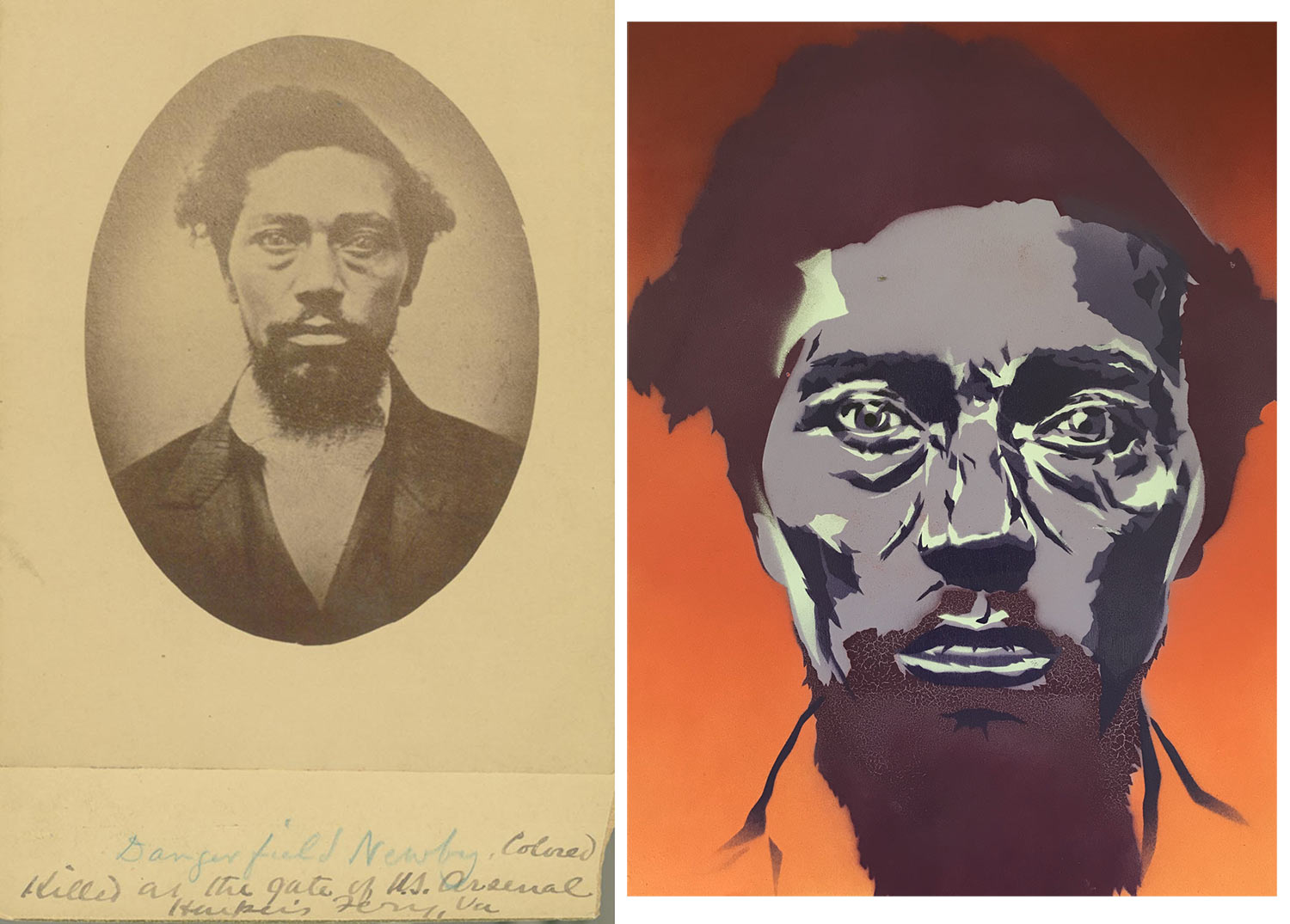
You ended up calling the project The Invisibles. Why?
The ‘Invisibles’ is a nod to Annie Brown, one of John Brown’s daughters. She spent the summer prior to the raid on Harpers Ferry living with the raiders, tasked as a lookout to ensure the locals didn’t get suspicious. Over that summer, she grew very close to each of them, and years later recalled them as “my invisibles” in telling her part of the story. She died in 1926, always guarding the family legacy, and lamenting that her contributions were ignored in the official narrative. That official narrative frequently omits her, as well as all the men and women that supported John Brown. So, ‘Invisibles’ is my attempt to take these men and women, and try to cast some sort of light on their lives and stories.
In tandem with photocopier collages, stencils were the printmaking technique I adopted when I first started doing political street art. I still appreciate how non-mysterious stencils can be, the tools are easily accessible. How did you get started cutting and painting with stencils? Is there a conceptual side to the technique for you?
I’m glad you mention that, because it was really some kind of unscratched itch in printmaking that led to me experimenting with stencils. I was an art student once upon a time, and got disillusioned by inaccessibility and cost, which deteriorated my connection to what I was trying to express. But the accessibility reeled me back in. The DIY ethos really helped me work around material and environmental challenges as I developed my skill. Stencils are pretty forgiving to an adaptable person, so yesterday’s ruinous crisis is an asset in my toolkit tomorrow. It rewards you for being persistent, flexible, or stubborn. I’m a little bit of all of that.
This project was a little different than my other work, and driven by an attempt to understand who these men and women were. I spent hours reading about each of them, and more hours yet meditating on their images in the process of drawing, cutting and painting them. In the process of doing that, I tried to express what I learned about their respective personality, motivations, history and acts within that image. It gave me a sense of responsibility to represent them in line with what I learned.
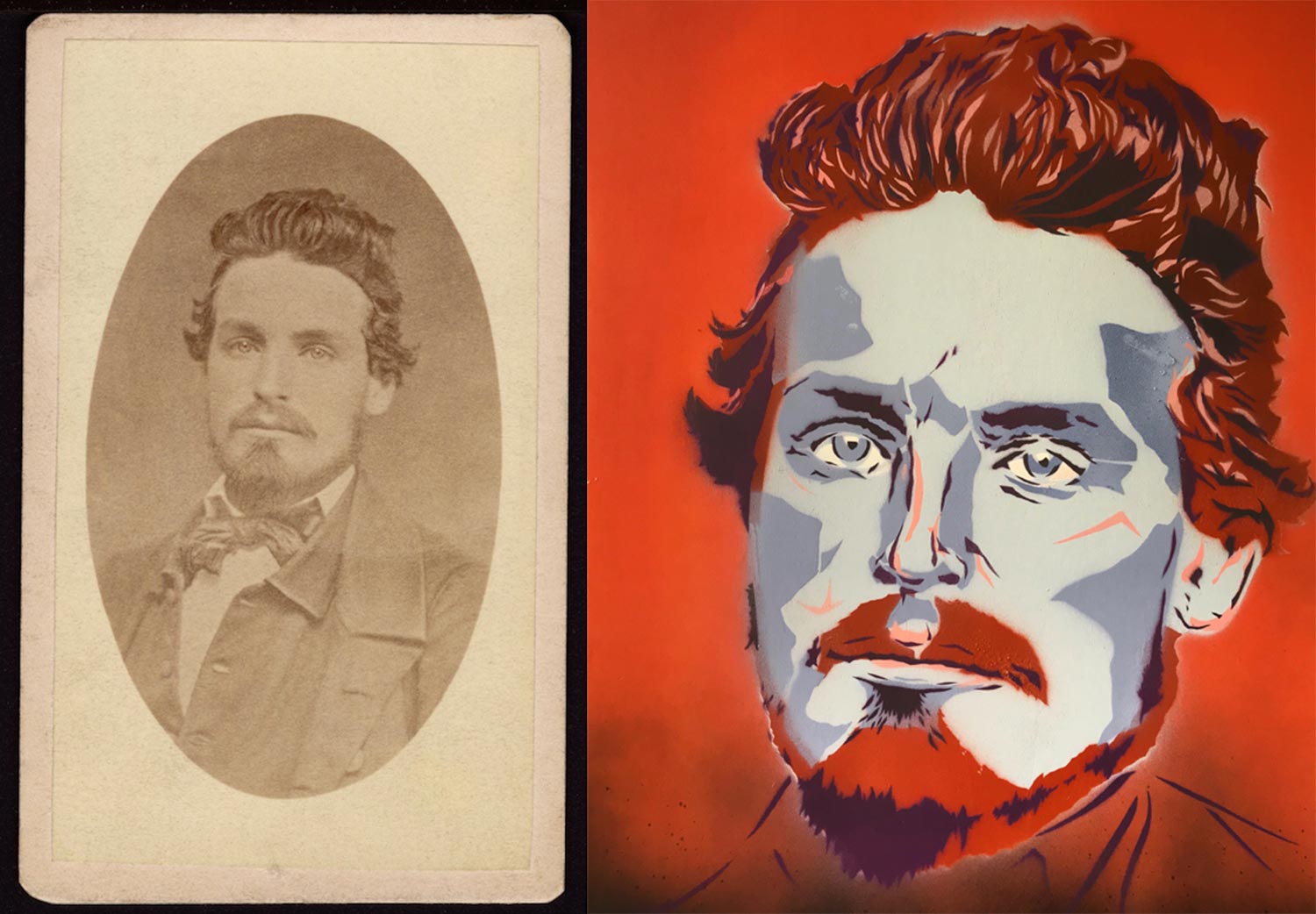
You’re right that John Brown is really the center of that story, by most accounts. I’m was aware that other folks were involved in the Harpers Ferry raid, but I don’t really know anything about who they were. I get from what you’re doing that you don’t think people should have to study the event in depth to understand that Harpers Ferry isn’t useful as a hagiographic, single hero narrative: you’re after the historic and contemporary reality of collective action. How do you see these portraits as cracking the dominant narrative?
I’m trying to broaden that narrative, to make it more inclusive of the people that made it happen, and honoring their diverse backgrounds and contributions. By centering the 24 Invisibles, and not including John Brown, I want to spark some interest in what brought each of them to Harpers Ferry. I want to explore the common threads between them and us. I think anyone can relate to the father ready to take any step to liberate his wife and children from bondage, or the teenage daughter volunteering to help her family and close friends. These are archetypal human stories.
The Invisibles were white men, free blacks, a former slave, a fugitive slave; daughters and wives, sons and brothers; veterans of conventional and guerrilla warfare; laborers and scholars; atheists and believers and everything in between. They were not unquestioning followers, and they frequently challenged Brown’s tactics and judgment, sometimes vociferously. These were men and women that freely chose to make a tremendous sacrifice in the service of a greater ideal of freedom. I think that is a powerful narrative that has been buried by design. It is easy to marginalize a “religious fanatic” or a criminal, and easier still to marginalize his followers. It completely eliminates the narrative of the collective action.
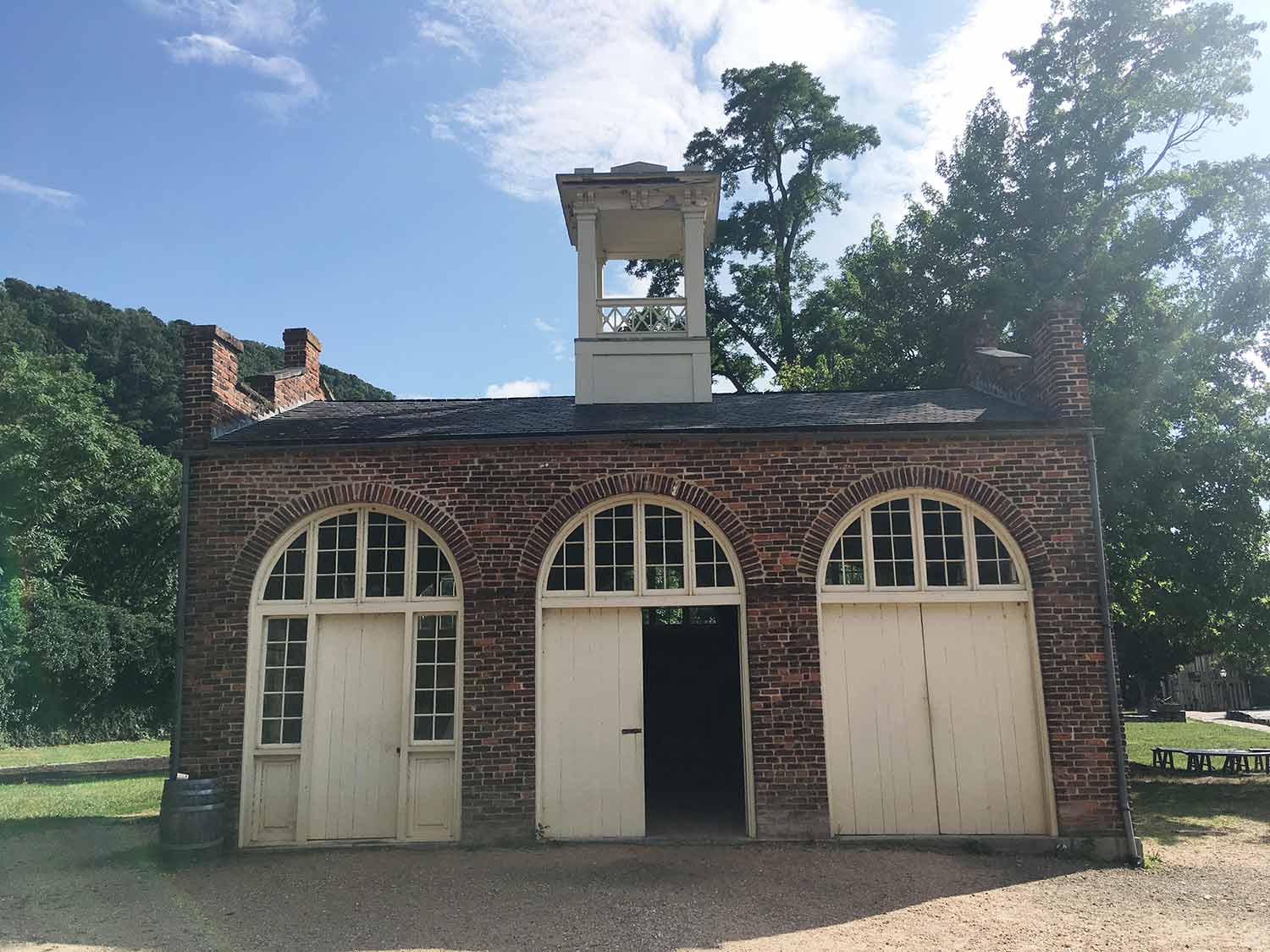
What’s it like working on this project in the environment of Harpers Ferry itself, as an artist in residence?
One of the things I love about Harpers Ferry, and the park in particular, is its willingness to engage with the history of John Brown in new ways. I found nothing but support from my coordinator and partners in exercising this project, and had a tremendous amount of latitude. There is definitely an opportunity there for anyone that is inspired by the place, it’s multi-layered history, and has an idea about how to explore some aspect of that.
There’s no substitute to having access to this kind of history. The artist-in-residence is given access to an 1840s apartment inside the park, overlooking the original site of the Engine House, where the raid was ended. You can sense the history of this place. It’s deeply humbling.
View this post on Instagram
Sometimes when I’ve been deep in a history project, I start staring at the pictures of the people a lot longer and more intimately than I would have previously. The first research project I ever fell into, uncovering the story of the anarchist publisher Ross Winn in Tennessee, was like that: it was a long time before we even found a picture of the guy, and then it really started to haunt me. You mention spending a long time with each of these portraits. I’m sure that more than one of them that really stuck with you – the face as well as the story – for longer than you expected.
To be honest, I carry all of them with me now. I’ve spent as many hours studying their features as I did studying their histories, and I feel a responsibility to them. I want to honor the price they all paid, and I know that I’m not done yet. But, a few in particular do stick out for me.
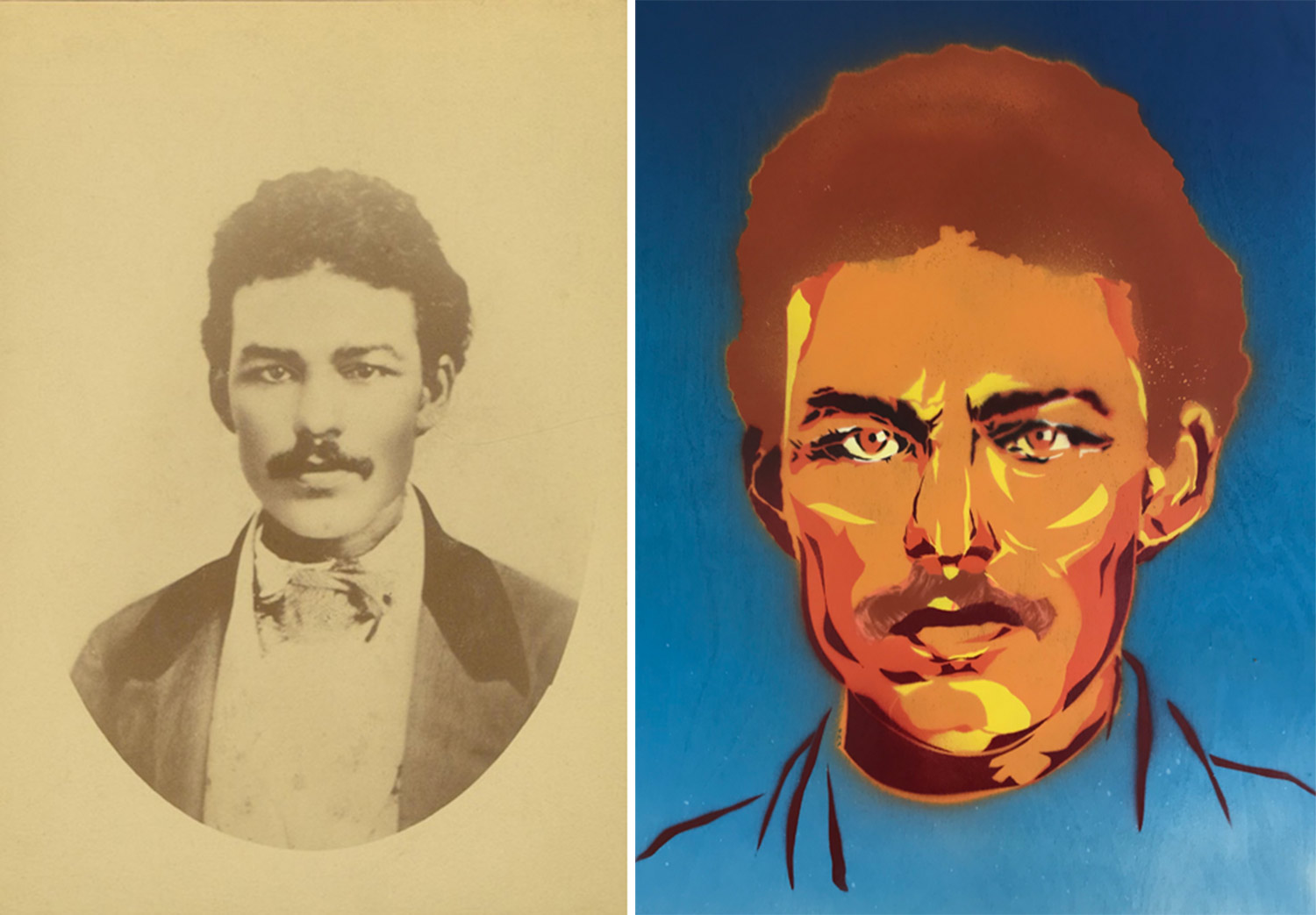
John Anthony Copeland (pictured above) was a free black from North Carolina, whose family fled their home after the passage of the Fugitive Slave Act. He grew up in a milieu of intense abolitionist fervor, and became active in the local underground railroad. One of his formative moments was when he, along with three fellows, stormed a hotel where a slave-catcher from Kentucky had imprisoned a local fugitive. John broke down a door, grabbed the fugitive, and hustled him out of town. He laid low for months, avoiding federal marshals, and possibly shepherded this fugitive to safety in Canada. Upon his return, he made the connection with the Brown party. He arrived in Maryland only days prior to the raid, and became embroiled in a bitter tactical debate– he believed he signed up to run off slaves, not wage war against the US government. After a tense discussion, he accepted a pike and his orders, and marched off to Harpers Ferry.

But one of the most compelling stories for me is that of Martha Brown (below). Daughter of a local pro-slavery family, she was disowned for her marriage to Oliver Brown, freshly returned from the fighting in Kansas. By all accounts, they had a deeply loving and full relationship, which was put on hold when Oliver agreed to join the mission at Harpers Ferry. Martha joined them later as domestic help, keeping the training soldiers fed and clothed in the run-up to the assault. Pregnant with their first child, Oliver shepherded her home a few short months prior to the assault. His farewell letter was heartbreaking. He died with a lock of her hair in his pocket.
While I tried to focus on the lead-up to the raid, Martha’s post-script broke my heart, and it cast a long shadow. Martha was the one to first learn the fate of the raiders, and she informed the rest of the Brown household. She ended up losing their daughter, Olive, shortly after her birth. Martha followed her shortly thereafter. She literally lost everything, and what records exist show her unwavering dedication to their cause, all the same.
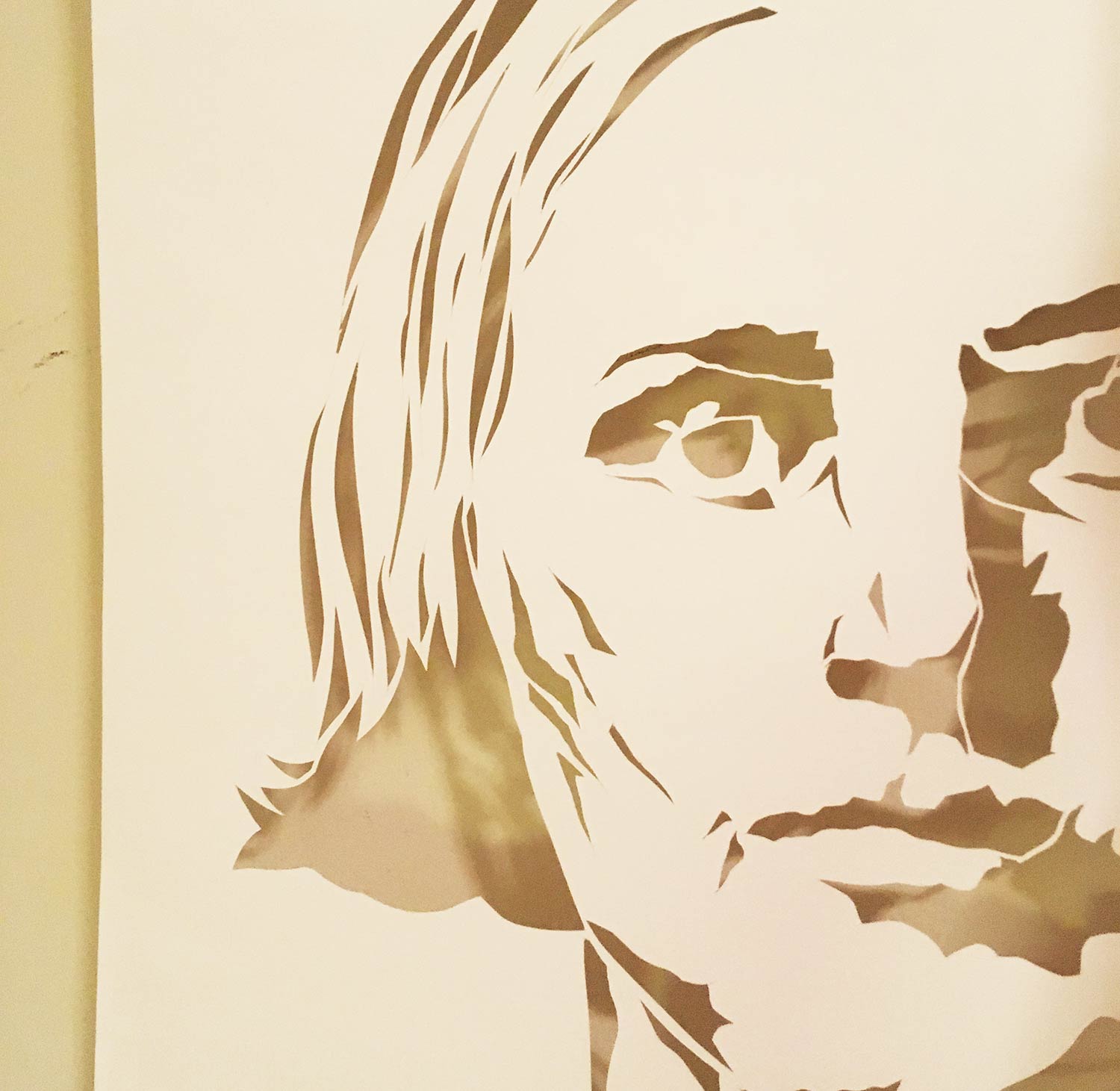
Where do you see this project evolving from here?
When I started work on this project, I did not anticipate how deeply I would be moved by what I learned and felt along the way. My research hasn’t stopped, and my work is not done. At this point, I don’t see it so much as a progression, but almost a flowering of output to keep their stories alive. I have many ideas I’m developing. I’d love the opportunity to collaborate with other artists in building on this, and tell the deeper Harpers Ferry story of collective action in the pursuit of justice.
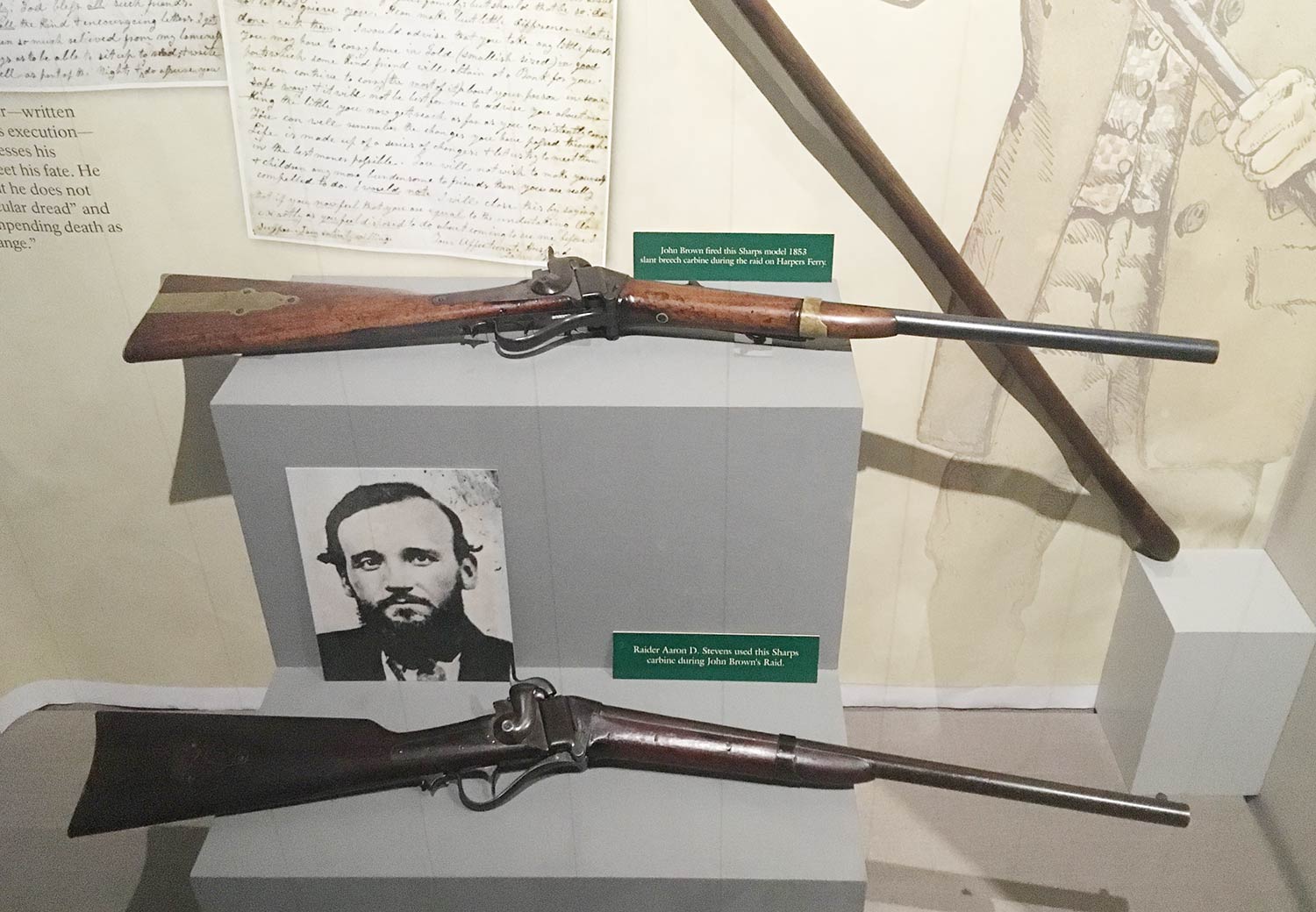
Peter’s portrait series, “The Invisibles”, is currently on exhibit in The John Brown Museum in the Lower Town of Harpers Ferry National Historic Park.
Find Peter on Instagram as @the_far_country, and check out his portfolio.
Context: Further Reading and Listening from Peter
The Half Has Never Been Told, Edward Baptist
The Tie That Bound Us, Bonnie Laughlin-Schultz
The “Colored Hero” of Harpers Ferry, Steven Lubet
Five For Freedom, Eugene Meyer
John Brown, Abolitionist, David Reynolds
Tim Lancaster – ‘Stones, Rivers and Trains’
Atmosphere – ‘Mi Vida Local’
Tim Barry – ‘Rivanna Junction’
Doomtree – ‘All Hands’
